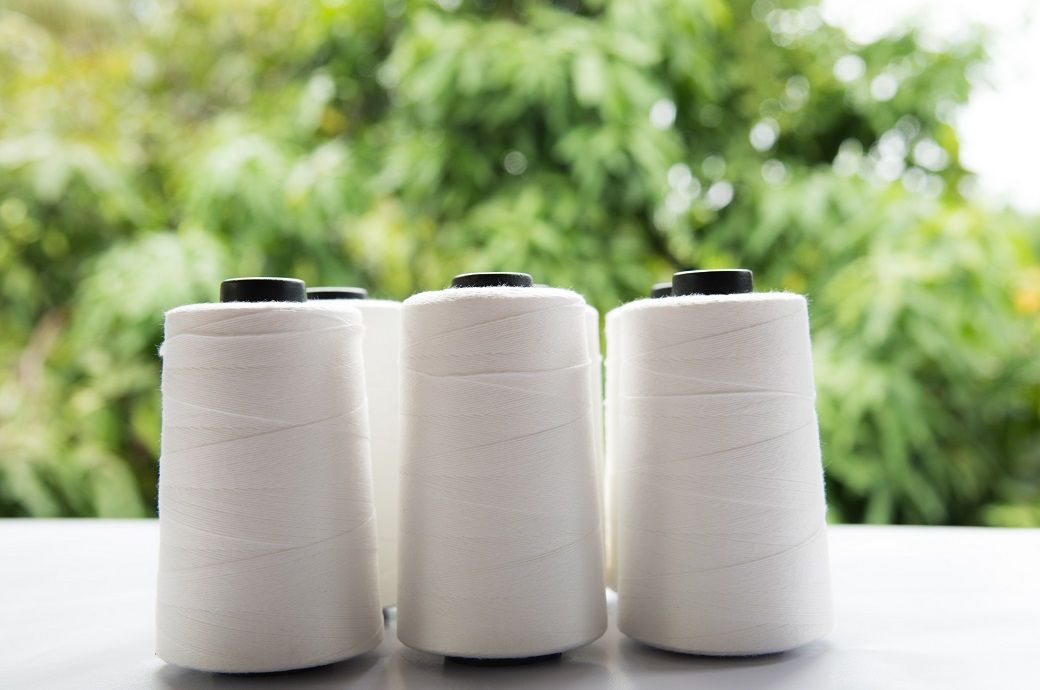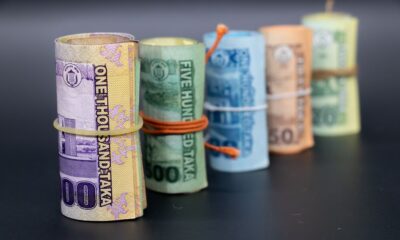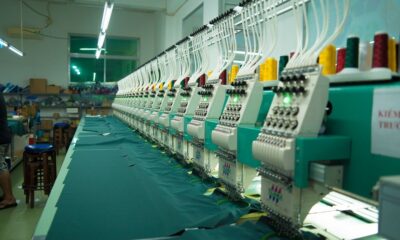Fashion
US brand Allbirds’ gross margin drops to 43.2% in Q3 FY25

The decline in gross margin primarily reflects a higher mix of digital and international distributor sales, as well as increased duties in the US business, which offset higher average selling price.
Allbirds reported Q3 FY25 net revenue of $33 million, down 23.3 per cent y-o-y, with gross profit of $14.2 million and a 43.2 per cent margin, down 120 bps.
Declines were driven by international distributor transitions, retail closures, and higher duties.
SG&A fell to $21.7 million.
The company focuses on cost reduction, liquidity, and growth initiatives.
In the third quarter of 2025, net revenue decreased 23.3 per cent to $33 million compared to $43 million in the third quarter of 2024. The year-over-year decrease is primarily attributable to structural changes, including impacts from international distributor transitions and planned retail store closures, the company said in a press release.
Selling, general, and administrative expense (SG&A) was $21.7 million, or 65.7 per cent of net revenue, compared to $31 million, or 72 per cent of net revenue in the third quarter of 2024. The decrease is primarily attributable to lower personnel expenses, occupancy costs, stock-based compensation expenses, and depreciation and amortisation expenses.
“We’re pleased to deliver third quarter results in line with our expectations, highlighted by a robust flow of new product introductions – many of which met with strong customer response,” said Joe Vernachio, CEO. “Entering the final months of the year, we will continue to support our product engine with compelling marketing content to capture consumer mindshare and reignite growth. Throughout the holiday season, we will be spotlighting gifting ideas and emphasising Allbirds’ core principles of comfort, style and sustainability.”
Net revenue in the first nine months of 2025 decreased 21.7 per cent to $104.8 million compared to $133.9 million in the first nine months of 2024. The year-over-year (y-o-y) decrease is primarily attributable to structural changes, including impacts from planned retail store closures and international distributor transitions.
Gross profit in the first nine months of 2025 totalled $44.8 million compared to $63.6 million in the first nine months of 2025, while gross margin declined to 42.7 per cent in the first nine months of 2025 versus 47.5 per cent in the same period a year ago. The decline in gross margin is primarily due to channel mix, with a lower percentage of sales coming from the retail business and a higher percentage coming from its digital and distributor channels, as well as increased promotional activity and higher inventory adjustments.
“Our teams are focused on accelerating progress under our turnaround in the quarters ahead,” added Vernachio. “At the same time, we are taking definitive steps to further reduce costs, enhance liquidity, and pursue value-creating opportunities.”
Fibre2Fashion News Desk (RR)
Fashion
Tariffs pushing Myanmar’s RMG sector to the brink?

Myanmar’s garment industry, once the beating heart of its export economy, is now reportedly reeling under the weight of US tariffs.
A steep 40 per cent tariff on Myanmar’s garment exports has made its products far less competitive than those from Bangladesh, Cambodia, Indonesia, etc, triggering a sharp decline in US orders.
Beyond tariffs, Myanmar’s apparel sector also faces growing headwinds from political instability, sanctions, poor infrastructure, and global scrutiny over labour rights.
The 40 per cent tariff, slapped on Myanmar, marking a slight reduction from an earlier proposed 44 per cent, has made its products far less competitive, particularly in the face of rising competition from countries like Vietnam, Bangladesh, Cambodia, Indonesia, Malaysia, etc, which enjoy lower—or in some cases, no—tariffs.
For an industry that has already been struggling to stay afloat due to various reasons, the new tariff has come as a hammer blow, compounding an already fragile situation, as per many within the industry.
It may be mentioned here that political instability, for long, remained a major concern area, with the military-led government facing growing international condemnation and sanctions.
The country also reportedly suffers from poor infrastructure, power outages, and limited access to financing, all of which make it a difficult place to do business. On top of that, questions around labour rights and corporate governance are also putting Myanmar’s garments on the radar of the increasingly discerning Western consumers.
In Europe, especially in markets like Germany and the UK, there is reportedly a growing movement to exclude Myanmar-made products due to concerns over labour practices and human rights, even as the International Labour Organization (ILO) also invoked Article 33—its most serious enforcement measure—for Myanmar’s alleged failure to comply with international labour standards.
And now there’s the additional 40 per cent tariffs imposed by the US. The result, as industry insiders claim, notable reduction in fresh orders, pushing factories to downsize, cut shifts, lay off workers, and factory closures in many cases.
In Yangon’s industrial zones, the slowdown is palpable. As per reports, at least six factories have shut down since August, while many others are operating at reduced capacity to survive the downturn.
The Myanmar Garment Manufacturers Association (MGMA) reportedly revealed that by August, 56 of its 589 member factories had suspended operations entirely, while the Federation of General Workers Myanmar (FGWM) has reportedly held the US tariff responsible for triggering the factory closures, pointing out that the increased costs have made it impossible for producers to remain viable.
The ripple effects are hitting the workforce hardest—particularly women, who make up the vast majority of the garment sector’s employees. For years, the industry has been one of the few reliable sources of income and empowerment for women in Myanmar. Now, thousands are reportedly finding themselves out of work as factories shutter or scale back, and those still employed are facing shorter working hours, slashed overtime, and shrinking wages.
So, even if the sector remains a vital part of the country’s economy, with every factory that shuts down and with every worker who loses their job, Myanmar’s path back to recovery seems increasingly difficult.
Fibre2Fashion News Desk (DR)
Fashion
Payment crisis hits Indian MMF yarn market; viscose sees revival

In Ludhiana, buying remained limited due to payment constraints. Traders expect PC yarn demand to pick up soon with an increase in summer garment manufacturing. A Ludhiana trader told Fibre*Fashion, “PC and polyester yarn prices were unchanged as consumption patterns showed no shift. Slow payment flow is denting buying capacity, but it may improve once manufacturing activities resume after workers return from their native places.” Meanwhile, recycled polyester fibre gained ****;*–* per kg due to a shortage of PET bottles, the primary raw material.
In Ludhiana, ** count PC combed yarn (**/**) traded at ****;***–*** (~$*.**–*.**) per kg (GST inclusive); ** count PC carded yarn (**/**) at ****;***–*** (~$*.**–*.**) per kg (GST inclusive); ** recycled polyester yarn at ****;***–*** (~$*.**–*.**) per kg (GST extra); ** count virgin polyester spun at ****;***–*** (~$*.**–*.**) per kg (GST inclusive); recycled polyester fibre (PET bottle fibre) at ****;**–** (~$*.**–*.**) per kg and virgin polyester fibre at ****;**.** (~$*.**) per kg.
Fashion
Kim Kardashian’s Skims raises new funding at $5 billion valuation

By
Reuters
Published
November 12, 2025
Skims, founded by reality TV star and entrepreneur Kim Kardashian along with Jens Grede, said on Wednesday it had raised $225 million in new capital, valuing the shapewear label at $5 billion.
Kardashian’s ventures, including her cosmetics brand SKKN, have attracted young shoppers and benefited from her vast social media following.
Other celebrity-backed brands have also drawn venture capital investment, as firms bet on the marketing power and built-in audiences of high-profile founders to drive consumer demand.
Elf Beauty agreed to buy Hailey Bieber’s makeup and skincare brand, Rhode, for about $1 billion in May, while Rihanna-backed Fenty Beauty and Khloé Kardashian’s Good American have received VC dollars.
The latest fundraising in the apparel company was led by investment giant Goldman Sachs Alternatives with participation from BDT & MSD Partners’ affiliated funds.
Skims said it plans to use the new capital to broaden its intimates and shapewear lines, expand further into apparel and activewear and enhance its retail presence and international growth.
“(The fundraise) adds to an already strong investor roster, including Thrive Capital and Greenoaks, positioning Skims as a credible IPO candidate in the future,” said Eric Bellomo, senior e-commerce analyst at PitchBook.
Skims, founded in 2019, said it is on track to exceed $1 billion in net sales in 2025.
Earlier this year, Coty sold a 20% stake in Kardashian’s beauty brand to Skims, consolidating the two businesses under a single brand.
The company has also partnered with sportswear giant Nike to launch activewear for women.
“By leveraging both Kardashian’s global celebrity and distribution advantages through partnerships… Skims is expanding its product ecosystem. The recent SKKN by Kim buyback underscores this integrated approach, aligning apparel, beauty, and lifestyle,” Bellomo said.
Skims, known for its focus on inclusive sizing, now operates 18 retail stores in the U.S. and two franchise locations in Mexico. The company said it is laying the groundwork to be a predominantly physical business over the next few years.
© Thomson Reuters 2025 All rights reserved.
-

 Business1 week ago
Business1 week agoGST rationalisation impact: Higher RBI dividend expected to offset revenue shortfall; CareEdge flags tax pressure – The Times of India
-

 Tech1 week ago
Tech1 week agoBlood Tests for Alzheimer’s Are Here
-

 Business1 week ago
Business1 week agoSetback for expatriates? Delhi HC upholds mandatory EPFO membership; what this means for foreign staff – The Times of India
-

 Fashion1 week ago
Fashion1 week agoGermany’s Adidas achieves highest-ever quarterly sales in Q3 2025
-

 Politics1 week ago
Politics1 week agoTrump links Republicans’ election setbacks to record US govt shutdown
-

 Tech1 week ago
Tech1 week agoZohran Mamdani Just Inherited the NYPD Surveillance State
-

 Fashion1 week ago
Fashion1 week agoBangladesh Bank allows foreign currency-taka swap facility for dealers
-

 Tech1 week ago
Tech1 week agoThe Security Interviews: Colin Mahony, CEO, Recorded Future | Computer Weekly

















